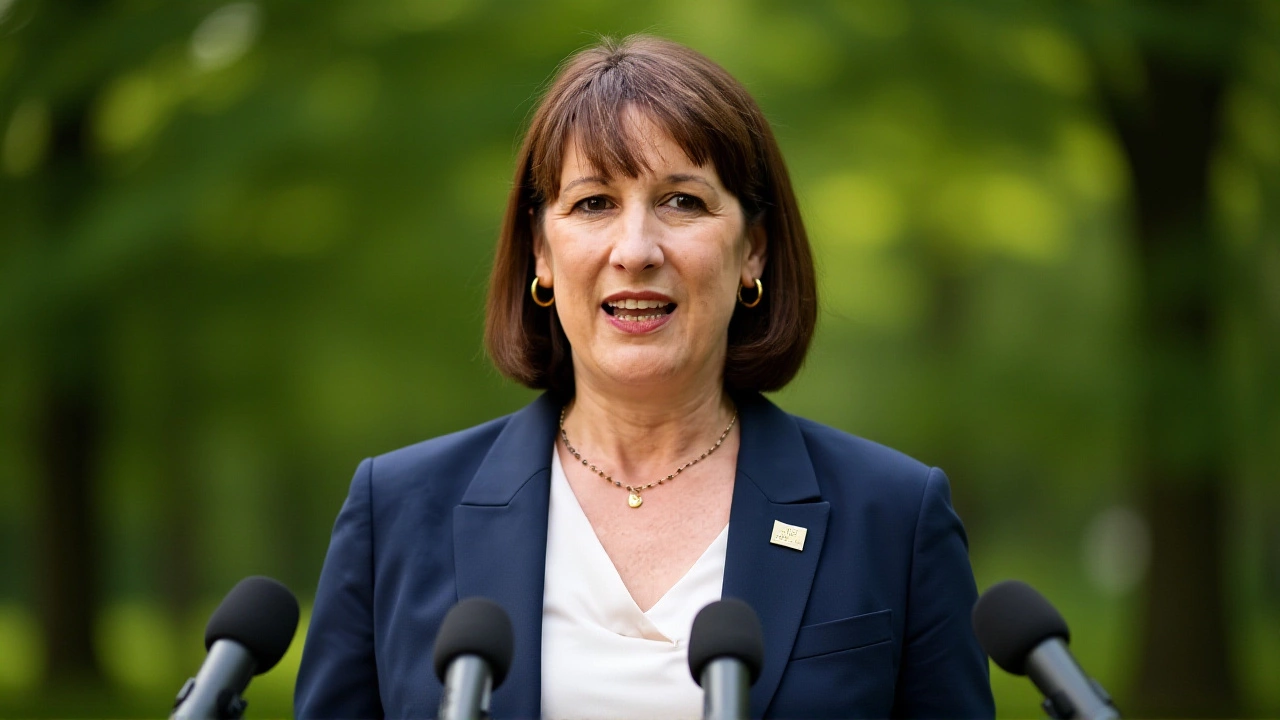Workers across the UK are set to see their paychecks jump by up to £1,500 a year — but the cost of living might not get any easier. Her Majesty's Treasury announced on November 12, 2025, that the National Living Wage for workers aged 23 and over will rise by the equivalent of £900 annually, while the National Minimum Wage for 21- to 22-year-olds will surge by £1,500. The move, timed 14 days before the Autumn Statement 2025House of Commons, is the first major fiscal signal from Chancellor Rachel Reeves, who’s under intense pressure to balance worker pay with public finances. The twist? While wages climb, local councils are expected to raise council tax beyond the 2% legal cap — a move critics are already calling a "raid."
Why This Isn’t Just a Pay Raise
It’s easy to celebrate a £1,500 boost. But here’s the thing: that money doesn’t come from thin air. The Treasury’s figures assume a 37.5-hour workweek over 48 weeks — meaning the actual hourly increases are modest, not revolutionary. For a full-time worker on the National Living Wage, the rise pushes the rate to roughly £12.35 an hour, up from £11.44 in April 2024. The 21-22 bracket jumps from £8.60 to about £10.70. The Low Pay Commission recommended these hikes on October 31, 2025, citing inflation at 2.8% and wage growth at 5.7%. But the real story isn’t the numbers — it’s the trade-offs.Labour’s manifesto promise to "Make Work Pay" is being tested in real time. The party won 411 seats in the July 4, 2024, general election, but with only 33.7% of the vote, it’s governing without a mandate for radical spending. Reeves, the first woman to hold the Chancellor’s office, knows every pound raised must justify itself. That’s why the "income tax raid" in The Telegraph’s headline isn’t hyperbole — it’s a warning. Analysts expect personal allowance freezes, higher top-rate thresholds, or even a new 50% band for earners over £150,000. The Treasury hasn’t confirmed any of this — yet.
The Council Tax Trap
While workers get more cash, households will pay more to live. Council Tax — the local property tax that funds everything from bin collections to youth centers — is expected to rise by 5% to 8% in many areas. That’s a direct violation of the 2% cap set by the Local Government Finance Act 1992. But here’s the loophole: councils can apply for "exceptional circumstances" exemptions if they can prove funding shortfalls. With the NHS and schools still recovering from years of underinvestment, and local authorities facing a £10 billion black hole by 2027, the pressure is mounting.Some councils, like Birmingham and Manchester, are already signaling they’ll hit the ceiling. A typical Band D property in England, currently paying around £2,100 annually, could see a £150–£200 hike. That’s more than the average worker gains from the wage increase. And it’s not just the poor — middle-income families, especially in high-value areas, will feel the pinch. "It’s a classic policy contradiction," says Dr. Helen Shaw, an economist at the Institute for Fiscal Studies. "You raise wages to help people, then raise their housing costs to pay for it. The net benefit for many is zero."

Who’s Paying the Price?
The numbers tell a stark story: 1.3 million workers qualify for the National Living Wage, and another 280,000 are covered by the 21-22 minimum wage bracket. That’s 1.58 million people directly affected. But the ripple effect hits far wider. Public sector workers — 5.5 million of them — are under a pay freeze. Teachers, nurses, and police officers, many of whom earn below the new minimum wage threshold, are watching with bitterness. "We’re being asked to work harder for less," said Sarah Jennings, a senior nurse in Leeds. "Meanwhile, the lowest-paid get a raise while we get silence. It feels like betrayal."The Office for Budget Responsibility will release its official forecast on December 9, 2025 — one day before Reeves presents the full budget. That report will reveal whether the Treasury has planned for £12 billion in new revenue from tax hikes and council tax increases. The timing is no accident. Reeves wants the OBR’s credibility to back her up — and to deflect blame.
What Comes Next?
All changes take effect on April 6, 2026 — the start of the new tax year. But the political fallout begins now. The Conservative Party, still reeling from its 2024 defeat, is preparing a campaign to paint Labour as "tax-and-spend." Meanwhile, the TUC is calling for a full review of the council tax system, arguing it’s outdated and unfair. Some MPs are even pushing for a wealth tax on properties over £2 million — a move Reeves has so far avoided.The real question isn’t whether the wage increase will help. It will. But will the rest of the budget undo it? If council tax rises outpace wage gains, and income tax freezes bite deeper, the "Make Work Pay" slogan could ring hollow for millions.

Behind the Numbers
To understand the scale, consider this: in 2024-25, Council Tax generated £42.1 billion across the UK — more than the entire NHS budget in Scotland. Labour’s plan to unlock additional revenue through local tax hikes is a direct response to the £15 billion funding gap left by years of austerity. But it’s also politically dangerous. In 2017, the Conservatives’ "dementia tax" proposal — a similar attempt to raise local revenue — helped sink their poll numbers. Reeves is walking a tightrope.The Treasury’s announcement came at 9:00 AM GMT on November 12, 2025 — a deliberate time, chosen to dominate the morning news cycle. The message was clear: Labour is acting. But whether it’s acting wisely remains to be seen.
Frequently Asked Questions
How much will my take-home pay actually increase after taxes?
The £900–£1,500 figures are gross increases. After income tax and National Insurance, a full-time worker on the National Living Wage will likely see an extra £650–£750 per year. For someone earning £18,000 annually, that’s roughly £55 more per month. The actual amount depends on your tax code and whether you’re in a higher bracket — but the net gain is real, if modest.
Why is the National Minimum Wage increase bigger than the Living Wage increase?
It’s not a mistake — it’s a policy choice. Workers aged 21–22 are being targeted to reduce youth unemployment, which remains stubbornly high at 12.3%. The £1,500 boost is a deliberate effort to incentivize employers to hire younger workers. The Living Wage increase is more about inflation alignment, while the Minimum Wage hike is about opportunity.
Which areas will see the biggest council tax hikes?
London boroughs like Croydon and Newham, as well as cities with high property values like Brighton and Oxford, are expected to lead in increases. These areas have higher service costs and lower central government grants. Rural councils, by contrast, may stay closer to the 2% cap due to lower revenue needs.
What happens if I’m on Universal Credit?
Your Universal Credit payments will be adjusted to account for higher earnings — but not fully. The taper rate remains at 55%, meaning for every £1 you earn above the work allowance, you lose 55p. So if your wage rises by £900, your benefit may drop by £500. The net gain? Around £400. It’s still a win, but not as big as it looks.
Is this the start of a broader tax surge?
Almost certainly. The OBR’s forecast will likely show a £7 billion shortfall in public finances. Labour has already signaled it’s considering capital gains tax hikes and a VAT increase on private school fees. The wage and council tax moves are the first pieces — expect income tax thresholds to freeze again in 2026, and possibly higher rates on top earners by 2027.
When will I see the wage increase on my payslip?
The new rates take effect on April 6, 2026 — the start of the new tax year. Employers must comply by that date. Some may choose to implement it earlier, but they’re not required to. If your pay doesn’t change after April 6, contact your HR department — and if needed, file a complaint with the Employment Agency Standards Inspectorate.





